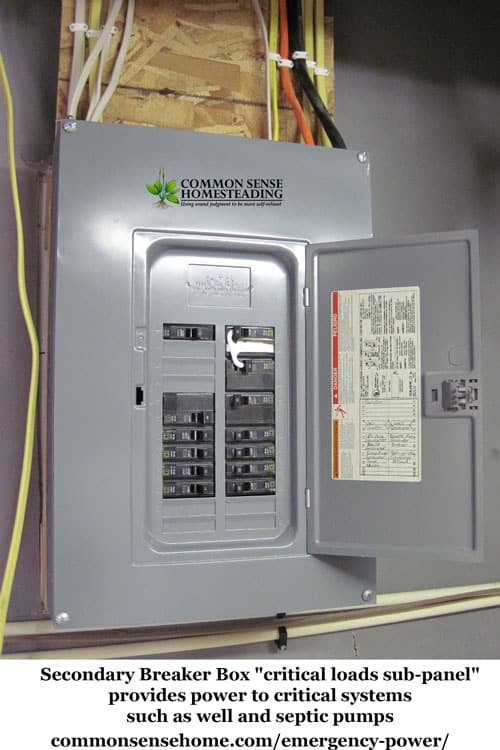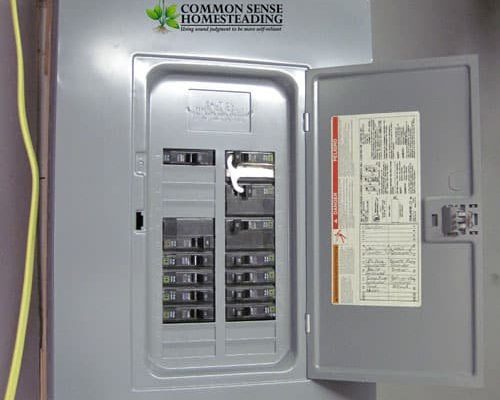
Here’s the thing—emergencies don’t send calendar invites. Whether it’s a surprise thunderstorm, a grid overload, or a blown transformer, your little patch of the Lower East Side isn’t immune. That’s why so many homeowners and apartment dwellers in the 10002 zip code are thinking seriously about emergency power options: generators, portable batteries, backup systems, and everything in-between. In this part of the city, a practical backup plan is less about prepping for the apocalypse, and more about keeping daily life from unraveling when the grid goes down.
Not every power backup works the same way, and what’s perfect for a brownstone owner might be useless in a high-rise walk-up. Let me walk you through the main choices for backup power—*not just what they are, but how they fit in city life, why they matter, and how to pick one that won’t let you down when you need it most.*
Understanding Power Outages in 10002: What Makes City Living Tricky?
If you’ve only lived in zip code 10002 for a couple of years, you might think blackouts are rare. But honestly, most city folks know that outages can hit at the worst times: during summer storms, heavy construction, or just random grid failures. What makes it worse? In dense areas like the Lower East Side, even small power cuts ripple fast—*elevators stall, store alarms chirp, and apartment lights vanish floor by floor.*
You might be wondering, *why not just run out and buy a generator like folks in the suburbs?* Unfortunately, NYC’s unique mix of apartment buildings, fire codes, and crowded streets makes that trickier than it sounds. Gas-powered generators, for example, can be loud, smelly, and sometimes even illegal to run on city balconies. Plus, there’s the ever-present issue of safely storing fuel and keeping things up to code.
In short: city living brings its own set of headaches when it comes to emergency power. There’s less space to work with, stricter rules, and the added challenge of needing to squeeze a big solution into a small, shared environment. But don’t worry—I’ll break down smart, legal, and effective options for New Yorkers just like you.
Portable Power Stations: The Flexible Favorite
Let me explain: *portable power stations* are the modern answer to clunky gas generators. These battery-powered boxes (think Jackery, EcoFlow, or Goal Zero) charge up when the grid is working, then give power back when it’s not. They’re quiet, compact, and safe to use indoors—which is pretty much a must-have for Manhattan apartments.
How do they work? You charge the station from a wall outlet, then unplug it and store it away. During an outage, you just plug in your essentials: a phone, lamp, WiFi router, even a mini fridge if you get a beefier model. Most have easy-to-read displays showing battery percentage, remaining run time, and output wattage.
- Pros: No fumes or noise, safe for indoor use, portable, simple “plug-and-play” operation.
- Cons: Limited by battery capacity—most can’t run a whole apartment for more than a few hours unless you invest in a top-end (and pricey) unit.
A fun story: My neighbor kept a small power station stashed under his bed. When a blackout hit last summer, he was the only person on his floor still charging his phone and reading by lamp while everyone else fumbled with candles. That little box made him pretty popular for a few hours.
Even if you can’t power everything, a portable power station keeps you comfortable and connected during those short city outages. Plus, you can actually use them year-round—for camping, charging e-bikes, or powering tools.
Home Standby Generators: Reliable, But Not Always An Option
Home standby generators (like those made by Generac or Kohler) are the gold standard in emergency power—they kick on automatically when the grid fails and keep the lights humming for days. Sounds dreamy, right? Here’s where city life throws a wrench: installing one in a densely packed neighborhood like 10002 isn’t always straightforward.
Why is that? These systems are heavy-duty—they need outdoor space for installation, ventilation for exhaust, and a steady supply of fuel (usually natural gas or propane). Many brownstones and single-family homes can accommodate this, but co-ops, condos, or pre-war apartments usually can’t.
Common challenges:
- Building regulations: Not every landlord or HOA will approve a generator installation. There are strict fire and noise codes to follow.
- Maintenance: Standbys need regular testing, fuel checks, and professional installation—no simple “DIY” jobs here!
- Cost: Units, installation, rewiring, and permits add up quick—think $7,000–$15,000 or more for a typical setup.
For many Lower East Siders, unless you own and control your whole property, home standby generators are more daydream than reality. Still, if you’re lucky enough to have a backyard, yard, or townhouse, a pro-installed standby system offers unbeatable peace of mind.
Solar Power: Clean Energy for Emergencies
Here’s a question I hear often: *Can solar panels help during a blackout?* The answer is yes—but with a twist. Solar panels by themselves don’t provide backup during outages (they usually shut down for safety). To make your solar setup work as emergency power, you need a solar battery system (like Tesla Powerwall or LG Chem).
How it all syncs up: Solar panels generate electricity during the day, which powers your home or charges the battery. If the grid goes down, the battery takes over automatically—no need to fumble with cords or switches. This setup can keep essentials (lights, internet, fridge) running for several hours or even a couple of days, depending on size.
- Pros: Clean, quiet, renewable energy. Great for sustainability-minded homeowners. Can help lower your regular electric bill, too.
- Cons: High upfront cost, requires roof access (which is rare in apartments), and usually needs expert installation and approval.
In zip code 10002, solar battery systems are best suited for brownstones, single-family homes, or buildings with roof access. If you rent or live in a high-rise, solar may not be practical—but community solar programs or window-based panels are starting to pop up as innovative options. It’s not quite “plug-and-play” yet, but worth keeping an eye on as tech evolves.
Gas-Powered Generators: Still Useful for Some
Let me be clear: gas-powered generators are the classic emergency power option, especially outside of New York City. They’re affordable, widely available at hardware stores, and strong enough to run appliances, tools, even sump pumps.
But—and it’s a big one—for residents of 10002, these generators come with a load of caveats.
- Indoor use is a no-go: Never run a gas generator inside, or even on a balcony, due to carbon monoxide risk.
- Storage is a challenge: Storing gasoline or propane inside city apartments is against fire code—and for good reason.
- Noise and neighbors: Generators are loud, and the vibration can bother people in adjoining apartments or buildings.
That said, if you own a ground-floor apartment with a backyard, or if your building has a shared safe space and management approval, a gas-powered generator could make sense. *Just be certain you follow local codes and always prioritize safety over convenience.*
Uninterruptible Power Supplies (UPS): Protecting Your Essentials
Maybe you don’t need to power your whole apartment—just keep your laptop, modem, and a lamp running through an outage. Enter: the uninterruptible power supply (UPS). Think of it as a mini backup battery that *instantly* takes over when power blips, protecting sensitive electronics from shutdowns or surges.
Why might you need a UPS?
- Your work depends on a stable internet connection (freelancers, remote workers, students—this is for you).
- You have security systems or medical equipment that can’t lose power, even for a minute.
- You want to avoid any risk of data loss or hard drive corruption on your computer.
UPS units typically only last 15–90 minutes, depending on size, but that can be just enough to finish what you’re doing, save files, and power down gracefully. In a city where even a short outage can mean lost productivity, a UPS is a smart, affordable layer of protection.
Making a Backup Power Plan: Steps for 10002 Homeowners
It’s easy to feel overwhelmed with all these choices. Here’s my advice, step by step:
- Assess your essentials: Make a list of what you *really* need powered in a blackout—phones, modem, fridge, medical equipment?
- Consider your home type: Do you have outdoor space? Are you in a high-rise, a brownstone, or basement apartment? Your building’s layout will shape what’s possible.
- Check local codes and permissions: Before you buy anything with an engine or install rooftop panels, read up on NYC Fire Department rules or ask your property manager. Compliance isn’t optional.
- Think about budget and maintenance: Would a plug-and-play portable battery cover you, or does your lifestyle demand a whole-home system? Cheaper isn’t always better if it leaves you stranded.
- Stay prepared: Keep your backup devices charged, know where your cords and extension cables are, and run a “test blackout” every once in a while to spot any issues before a real emergency.
Sometimes, the “perfect” system doesn’t exist. Layering solutions—a UPS for electronics, a portable station for lights and small appliances—gives you flexibility and peace of mind.
Comparing Emergency Power Options: What’s Right for 10002?
It’s tempting to just grab whatever’s on sale at the hardware store, but in zip code 10002, your backup power choice should fit your home, your habits, and city rules. Here’s a quick look at how the main options stack up:
| Solution | Best For | Key Benefits | Drawbacks |
| Portable Power Station | Apartments, condos, renters | Silent, safe indoors, no fuel needed | Limited runtime, pricey for high capacity |
| Home Standby Generator | Brownstones, townhouses | Automatic, whole-home backup | Needs space, expensive, requires pro install |
| Solar + Battery | Buildings with roof access | Eco-friendly, can reduce bills, automatic | High upfront cost, not for most apartments |
| Gas Generator | Ground-floor with outdoor space | Strong output, affordable | Can’t use indoors, storage and noise issues |
| UPS | Everyone | Instant backup for devices, easy setup | Very limited runtime, only covers essentials |
The bottom line for 10002 homeowners: your best move is the one that keeps you safe, legal, and as comfortable as possible, given your particular living situation.
Staying Ready, Whatever Comes Next
Living in zip code 10002 means embracing the vibrancy—and the quirks—of NYC life. Power outages don’t have to leave you scrambling in the dark. With the right combination of emergency power options—whether that’s a sleek portable battery, a tried-and-true UPS, or a full-scale standby system if your property allows—it’s possible to stay connected, comfortable, and in control, no matter what the city throws your way.
Honestly, peace of mind is the real goal here. Take a little time now to choose the backup solution that suits your home and your lifestyle. You’ll thank yourself the next time the lights go out and you realize you’re the only one still streaming, working, or making that midnight snack…business as usual, even in the middle of a blackout.
